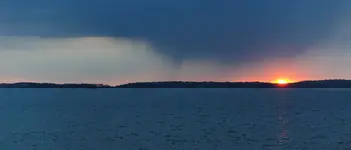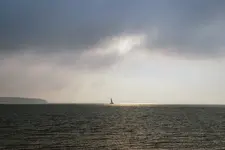D
Deleted member 140734
Guest
- #1
Thread Owner
That was a new sensation. I was about a half an hour's hike into a large section of woods detecting. Beautiful blue sky day, but only in the upper 30s to low 40s with a strong and cold wind from the NW. I was detecting in small rolling hills that are pretty heavily forested with mostly mature oak trees. Woods that I know very well, perhaps better than anyone else alive. Trying to get into some tick infested areas before they fully emerge. The ticks are definitely out and have been for weeks. I see them in temps above the high 30s. If you scrape the leaf matter with your boot down to soil, you see many varieties. If you stop long enough you can see some starting to move up your boots. But I know how to deal with them and they never successfully feed on me.
Around midday I started to smell smoke. A strong piney smelling smoke. It was too windy for any smart person to build a campfire. It was close enough to see smoke moving quickly around me, for my eyes to burn, and to start coughing some. I could see haze on the NW horizon. I started Googling fires in my county but nothing came up. I ended my day early. The closer I got to home about 10 miles away, the clearer the air became.
Later last night I read a bulletin that the authorities did a control burn at the Nature Conservancy's Mashomack Preserve on Shelter Island, over 2,350 acres of interlacing tidal creeks, mature oak woodlands, fields, freshwater marshes and underwater lands. Located just a few miles to the NW across an ocean channel from where i was detecting, I must have been directly in the smoke funnel. They must have started the fire on SE corner of the preserve surrounded on three sides by water, letting the high winds push the flames towards water.
I have never seen a controlled burn in my 30 years of living on the eastern end of Long Island on the South Fork. We have had some brush fires break out, usually in conjunction with dry summer heat waves. We recently had a series of large fires earlier this month which were successfully contained without major damages. What makes it unnerving is, starting about the last decade or so, Southern Pine Beetles (SPB) have ravaged our pine barrens regions, affecting all pine tree species, but especially our pitch pines. Large areas look like wastelands with mature trees lying dead. So we have a lot of dead brush accumulating. After what happened in SoCal recently, it has made everyone a little nervous. During the mid-1990s, we had large pine barrens fires to the west of me near Brookhaven Labs. Between 1965 -1996, the lab operated a nuclear research reactor that provided neutrons for scientific experiments. Given that my area has only one major road out of the region, fires are in our minds.
Around midday I started to smell smoke. A strong piney smelling smoke. It was too windy for any smart person to build a campfire. It was close enough to see smoke moving quickly around me, for my eyes to burn, and to start coughing some. I could see haze on the NW horizon. I started Googling fires in my county but nothing came up. I ended my day early. The closer I got to home about 10 miles away, the clearer the air became.
Later last night I read a bulletin that the authorities did a control burn at the Nature Conservancy's Mashomack Preserve on Shelter Island, over 2,350 acres of interlacing tidal creeks, mature oak woodlands, fields, freshwater marshes and underwater lands. Located just a few miles to the NW across an ocean channel from where i was detecting, I must have been directly in the smoke funnel. They must have started the fire on SE corner of the preserve surrounded on three sides by water, letting the high winds push the flames towards water.
I have never seen a controlled burn in my 30 years of living on the eastern end of Long Island on the South Fork. We have had some brush fires break out, usually in conjunction with dry summer heat waves. We recently had a series of large fires earlier this month which were successfully contained without major damages. What makes it unnerving is, starting about the last decade or so, Southern Pine Beetles (SPB) have ravaged our pine barrens regions, affecting all pine tree species, but especially our pitch pines. Large areas look like wastelands with mature trees lying dead. So we have a lot of dead brush accumulating. After what happened in SoCal recently, it has made everyone a little nervous. During the mid-1990s, we had large pine barrens fires to the west of me near Brookhaven Labs. Between 1965 -1996, the lab operated a nuclear research reactor that provided neutrons for scientific experiments. Given that my area has only one major road out of the region, fires are in our minds.





